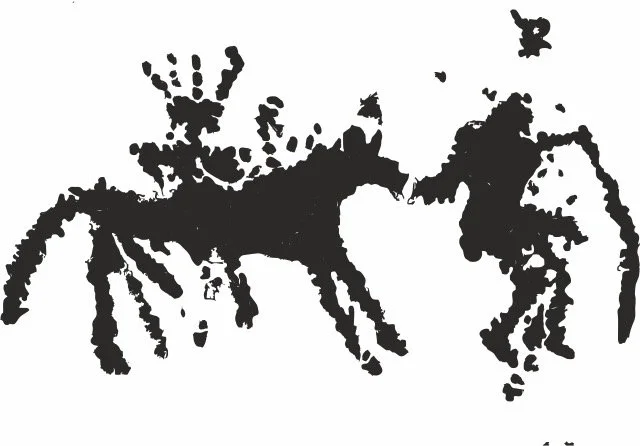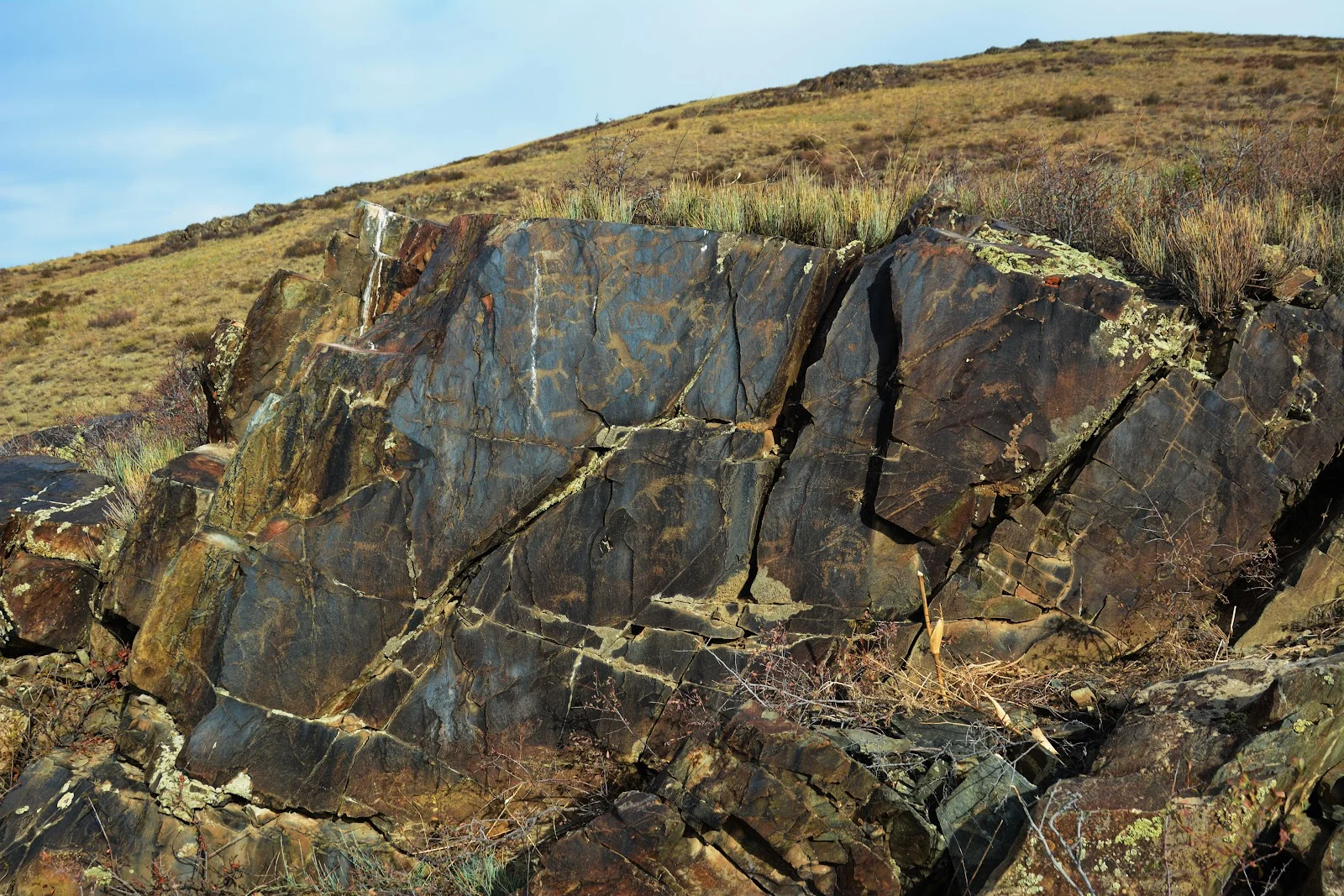What could a witch on a broomstick from a fairy tale and a person with a staff on a petroglyph from the Qarabas-I sanctuary possibly have in common?
The scene in question was documented in 2017 by a team led by Professor A.N. Maryashev on the border of China and Kazakhstan while exploring the southern spur of the Tarbagatai range in the East Kazakhstan region. The deputy commander of the Usharal border detachment, A.A. Akimbekov, reported information about a large cluster of rock drawings. As a child, he was interested in history, but following family tradition, he chose a military profession. Nevertheless, he managed to contribute to the study of Kazakhstan's history. He noticed the petroglyphs while patrolling the area adjacent to the border.

Staff. The Qarabas-I cluster. Illustration/Olga Gumirova
Most people would see this scene as merely an illustration of ancient daily life—a shepherd with his flock, nothing out of the ordinary. Some might even associate the petroglyph with figures like Moses or Christ since the shepherd's staff has long been strongly linked with these prophets in our minds.
But it's not that simple.
The petroglyph appeared long before the advent of Christianity and possibly even the myths and legends that formed the basis of the Old Testament. This petroglyph was made in the early Bronze Age – two to three thousand years before our era. This is confirmed by the characteristic boots on the person – according to archaeologists; these were worn by representatives of the Andronovo tribes, who inhabited the region at that time. Moreover, the animals surrounding the person with the staff cannot be identified as a herd. They are not domestic animals and, in reality, never graze together.

Staff. The Qarabas-I cluster. Illustration/Olga Gumirova
From this, it follows that the scene is most likely an illustration of some myth whose main characters are a person with a staff and a rider on a horse. On closer examination, traces of a partially lost image of an unusual headdress with ray-like feathers were discovered on the rider's head.
Such a headdress and staff are attributes of people with special social status: leaders, shamans, prophets, or deities.

Staff. The Qarabas-I cluster. Illustration/Olga Gumirova
The only question remaining is what these characters from the Karabas-I sanctuary are doing.
Ethnographers have observed that during special rituals, where virtual journeys to the spirit world occurred, shamans of most Siberian peoples used a staff before the advent of the drum. Some still use it during their ceremonies today. Among the Evenks and Buryats, there are two types of staffs made from different kinds of wood and with different toppers – deer or horse heads. For their journeys to the Upper World, shamans carry a staff adorned with a deer's head, while for trips to the Underworld, they use one with a horse's head.
Based on this, we can assume that the elder (the artist, by the way, masterfully conveyed the figure of an elderly person) leading a horse and holding a magical staff is most likely heading to the Underworld. As for the purpose? We can only guess.
Incidentally, the broomstick used by European witches to fly to their sabbaths is a descendant of the same staff, an ancient tool for traveling between realities.
Incidentally, the broom of European witches, on which witches are known to fly to their sabbaths, is a descendant of the same staff, the ancient means of transport between realities.

Roerich landscapes of Targabatai/Olga Gumirova




